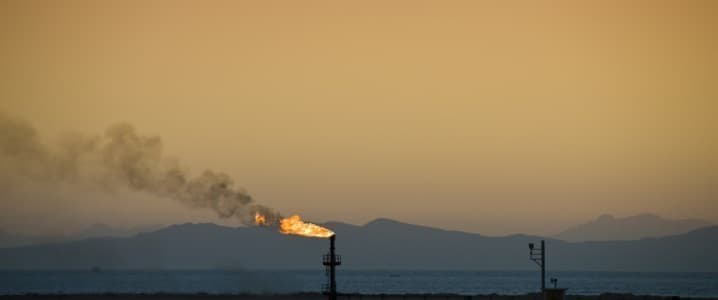
Optimism about Egypt’s future as an energy hub is still going strong, as offshore East Med natural gas reserves are plentiful, and new discoveries are still being made. The growing cooperation between Egypt, Israel, Cyprus, and Greece, to monetize and integrate available reserves simultaneously has received a major boost from the fallout of the Russian invasion of Ukraine, and the still-existing concerns about energy security in Europe.
Egypt’s LNG exports are suddenly in high demand and are expected to grow while demand in Europe continues to grow. Overall, when only looking at these exogenous factors, Egypt’s future is bright. However, North Africa’s largest economy is hitting rock bottom, and as inflation continues to rise, internal unrest is still a major threat.
In terms of new gas production, Egypt is making progress. British energy company Energean reported this week that the first gas had been delivered at its offshore Egyptian North El Amriya and North Idku (NEA/NI). The two projects were sanctioned in January 2021, and first gas was expected to flow within 26 months. Currently, first gas has been produced on the NEA6 well, while three more wells will be online during 2023. The NEA/NI development, which lies in Egypt’s shallow waters, holds an estimated 39 mmboe of 2P reserves (88% gas) with net working interest production expected to peak at 15 – 20 kboed (88% gas) in 2024. Production will use existing infrastructure and involves the subsea tieback of four wells to Energean’s North Abu Qir PIII platform.
At the same time, Israeli PM Netanyahu stated in the Italian newspaper La Republica on March 9 that Israel is interested in supplying Italy with natural gas. Netanyahu said this before his visit to Rome, where further talks about bilateral economic cooperation are on the agenda. Egypt and Israel already signed a deal with the EU in June 2022 to boost LNG exports. At the same time, Israel has signed another deal with French oil and gas major TotalEnergies and Italian major ENI, allowing both to start exploring for natural gas within the framework of a landmark maritime border deal with Lebanon. Main Israeli gas exports (and potential volume increases) will be linked or will be flowing via Egypt’s infrastructure and LNG plants.
In the last weeks, Egypt has been making headlines on issues that could be worrying not only for the country’s own situation but also for investors and European importers of Egyptian LNG. The Egyptian Central Agency for Public Mobilization and Statistics (CAPMAS) has reported that the country’s annual headline inflation rate increased to 32.9% in February 2023, compared to 10% in February 2022. The main reasons for the current extreme inflation levels are higher prices of food and beverages (61.5% y-o-y), the prices of housing, water, electricity, gas, and fuel (8.1% y-o-y), and rising healthcare costs (16.8% y-o-y). CAPMAS also stated that the monthly consumer price index (CPI) recorded 161.3 points in February 2023, marking a 7.1% growth as compared to January, data showed. The agency also reiterated that Egypt’s annual headline inflation rate increased to 26.5% in January 2023, compared to 8% in January 2022. Analysts have been warning for years that Egypt’s overall economic development is lopsided and is not focusing on the real underlying issues that are currently constraining or even weakening economic growth. For decades, Egyptian government subsidies have been draining its budget. Over the course of the last couple of years, subsidies have been cut, but even so, continue to pressure fiscal budgets. Other main issues are a still over-valued currency, weak property rights, and an overbearing state and military in strategic economic sectors. The government’s involvement has deterred international investments and constrained competition.
Despite the rampant inflation and economic woes, investment in the country’s hydrocarbon and energy sectors is still very strong, but FDI outside of this primary sector is very low. Egypt’s main streams of revenue are still related to remittances, tourism, and its Suez Canal transit fees. A costly defense of the Egyptian pound, lack of structural reforms, and low FDI levels are having a detrimental impact on the country’s economy, and even though GDP is growing, with a forecast of 4-5% for 2023, all positivism is wiped away by a surging population.
For average Egyptians, the main crisis is the devaluation of the Egyptian pound against the US dollar, which has depreciated almost 50% since March 2022. This development has led to an acute dollar shortage, affecting imports and causing a backlog of goods at ports. Analysis also shows that around 60% of Egyptians (104+ million) are below the poverty line, in comparison to 30% before COVID.
Egypt has asked Gulf Arab countries and the IMF for loans, and while more foreign money is flowing into the country, conditions for the loans are getting tougher. Cairo estimates that the government debt level will hit 93% of GDP this year, a number that it wants to lower to 75% of GDP by 2026, but no one really knows how the government is looking to achieve this. Rational choices, such as cutting back on high profile projects or defense are out of the question at present. Part of the current increase in government debt is due to its large defense spending program, which has pushed Egypt to become the 3rd largest arms importer globally.
A renewed economic and financial crisis could not only destabilize the current Egyptian government and state-structures, but could also put at risk its flourishing LNG industry. Unilateral decisions made by Cairo to refocus on its own monetization of reserves could be a potential threat to the current cohesion inside of the East Mediterranean Gas Forum (EMGF).
By Dr. Cyril Widdershoven
More Top Reads From Oilprice.com:



